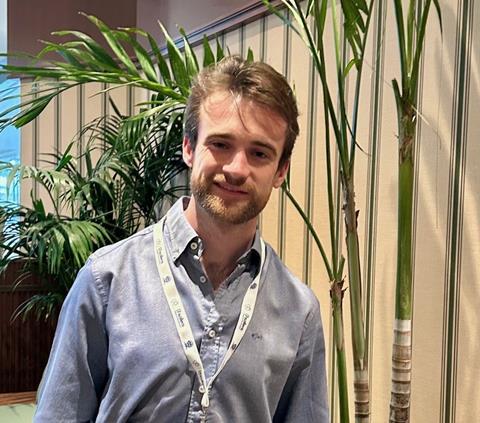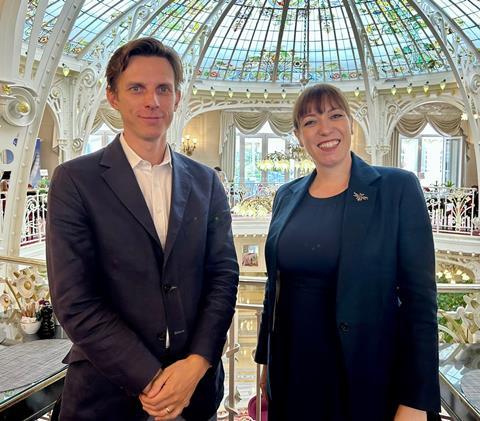Firms now have ’the room and scope to invest in their own problems that actually matter to them and not just the market initiative’, says tech company president
In early September 2025, Lloyd’s confirmed that its much-discussed Blueprint Two digital modernisation programme was once again being delayed, with market testing scheduled for 2026 and re-platforming work expected to take place around 2028.
This newly confirmed technology trajectory marks an impressive timeline for Blueprint Two, which initially launched in November 2020 as the revamped version of September 2019’s Blueprint One digital modernisation plan.
These blueprints were created after Lloyd’s of London designed its Future at Lloyd’s digital transformation strategy in May 2019.

Since work on actioning Blueprint Two began, however, Lloyd’s has continued to announce delays to launch dates of various elements within the initiative, which aims to use digitalisation to make processes around placements, accounting and claims settlements more efficient.
At last count, there have been around four confirmed delays to the project timeline.
Although there is an air of disappointment reverberating around London-based insurance and reinsurance focused firms about Blueprint Two’s latest delay, feedback from this year’s Rendez-Vous de Septembre in Monte Carlo revealed excitement that investment ringfenced for Blueprint Two integration can now be repurposed for internal technology transformations.
Ben Rose, president at Supercede, explained this “opportunity” to Global Reinsurance: “Blueprint Two has been like waiting for a bus that could come at any minute. Everybody’s been looking around the corner, trying to see whether the bus is going to arrive.
“During that time, they’ve not really been able to do anything else. Firms have had budget reserved to spend on Blueprint Two related things, which they’ve not been able to use – but [the budget] has stayed there.
“Now at least they know [Blueprint Two has been delayed for the foreseeable future]. That means suddenly they’ve got the room and scope to invest in their own problems that actually matter to them and not just the market initiative.
“So, very excited to see suddenly lots of budget become available to fix very outdated processes.”
Andy Moore, Lloyd’s and London market leader at professional services firm PWC, agreed that now there is “nothing stopping companies from continuing to develop” their technology in-house.
“What companies can do for themselves in terms of enhancing, automating, digitising their own processes doesn’t have to wait for Lloyd’s to finish Blueprint Two,” he added.
Charles Clarke, group vice-president at technology firm Guidewire, concurred with this consensus: “I wonder if [the Blueprint Two delays] will force a number of market participants to act individually and not wait [for Blueprint Two to be launched].
“I wonder if that’s a result of the of the delay, because if they can’t deliver [the plan] collectively, then they’re going to have to deliver it individually.”
Richard Dudley, group chief broking officer at BMS Group, is of the same opinion: “[The delays do not] hold anybody back. It doesn’t hold back [firms’] ability to trade peer to peer, to use new technologies themselves.”
Fit for purpose?
By the time Blueprint Two’s road map is delivered, the project will have been ongoing for around 10 years. This raises the extremely pertinent question of whether its defined areas of focus and planned changes will still be fit for purpose considering the rapid evolution of technologies such as artificial intelligence (AI).

Rose confirmed that this was the “biggest challenge” with the scheme’s new timeline.
He said: “Blueprint Two will have been designed about 10 years ago by the time it’s launched. In that time, we’ve had an AI revolution, we’ve had completely different changes in the way people do business. So, is it even [going to be] fit for purpose by the time it comes out?
“It might be that we need a Blueprint Three by the time we arrive at the Blueprint Two execution schedule.”
Christina Colby, chief customer officer at Guidewire, agreed that with such lengthy delays confirmed, this “almost requires someone to take a fresh look at” the Blueprint Two plans “and trying to understand why it was delayed so dramatically, if there’s a better way to approach it”.
She added: “Everyone has a lot of hope for what [Blueprint Two] can promise, but the fact that we saw the dates slip a couple [of] times and now suddenly the perspective is 2028, it feels disheartening. The opportunity of [Blueprint Two and market-wide modernisation] does not suddenly halt for three years.”
Dudley, however, remains much more positive that Blueprint Two will not be “obsolete before it starts”.
He explained: “In reality, setting [the industry] up with this [modernised] back office will help us do two things.
“It will help us get much more excited about how we use the data that flows from that system and how people can possibly create new products, new derivative markets – a little bit like we’ve seen in foreign exchange and commodities markets and other financial services. That’s a long way off, but there is that possibility we’ll get this right.
“It also makes us much more resilient. This technology will be built in a way where people will be able to interact with it in different ways, so I don’t think it’s going to be obsolete before it starts.
“My view is it doesn’t matter whether [Blueprint Two is] done this year, next year or in two years’ time. It really doesn’t matter. This is just something that has to be carried out and if it takes longer, then it takes longer.”
Implementation challenge remains
Attendees across the Rendez-Vous de September conference agreed that the magnitude of the Blueprint Two project – including the sheer number of firms involved and that will be impacted by the changes – is an implementation barrier that has contributed to the plan’s delays so far.
Clarke, for example, noted: “The collaboration has not yet delivered because shared change is a difficult thing to execute. Core technology modernisation for large organisations is never a quick, easy, cheap endeavour.”
Dudley agreed: “My personal view on Blueprint Two is, at its heart, it is a dramatic tech upgrade and we all know that big tech projects take longer than anybody thinks and they cost more money than anybody thinks. So, I am not surprised at all [about the announced delays].”

Supercede’s Rose has a slightly different view, however. For him, “decision by committee is not the right way to do technology”.
He explained: “Anybody who is sat waiting around for market initiatives to solve their technology problems is not pursuing a viable strategy.
“We should share and pool technology resources,” said Rose.
“The easiest way to do that is to buy it off the shelf – that means you share the cost with everybody else who is buying it off the shelf rather than [contributing to a] massive duplication problem, with everybody building their own version of the same thing in-house,” he added.
Market-wide demand
Despite the delays, all the professionals approached by Global Reinsurance acknowledged that ensuring Blueprint Two made it over the finish line was of paramount importance.
This applied especially for smaller syndicates or syndicates in a box that solely operate in the Lloyd’s and London market arenas because they may lack the in-house firepower for modernisation, versus firms that operate across company and Lloyd’s marketplaces.
Clarke described these syndicates as “eggs in that basket, waiting” for market modernisation to be finalised. Colby agreed: “It inherently puts them at a disadvantage to not be able to have an alternative.”
Moore added: “There’s a need for resilience and there is a need for [Blueprint Two] to be successful.
“[Delay] was probably the only decision [Lloyd’s] could make at this stage. It isn’t ready. People need it to work. We can’t keep having delays [and technology] that doesn’t work. It doesn’t help people with stability. It doesn’t help people with certainty around planning.”
Dudley agreed with Moore’s sentiment – however he is less focused on a structured timeline for the digital transformation project.
He explained: “We’re trying to put into the cloud 300 years of history on how we trade. Some of the systems we’re currently using to manage that back office are 30 years old, so there’s a resilience issue. There’s an information technology modernisation issue. A lot of the back office machine we have in London, quite a big portion of it exists to correct mistakes that are made when we actually upload contracts, where we don’t have a common data record, where we don’t have a single source of the truth. This project will enable us to move to that position.
“So, there are dramatic benefits further down the line, but the first step is simply to digitise what we’re doing now, which is incredibly complicated.
“Maybe expectations have been set in the last few years, which made people think [Blueprint Two] was going to happen last year or the year before. So, I totally understand the frustration, but for me, [Blueprint Two] is incredibly complicated and it will take as long as it takes.”










No comments yet